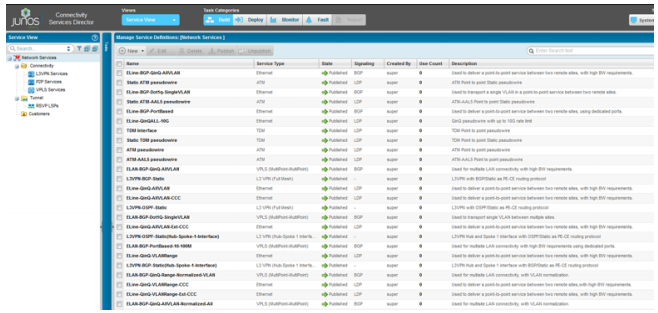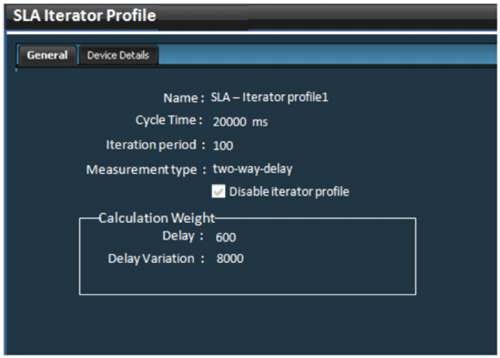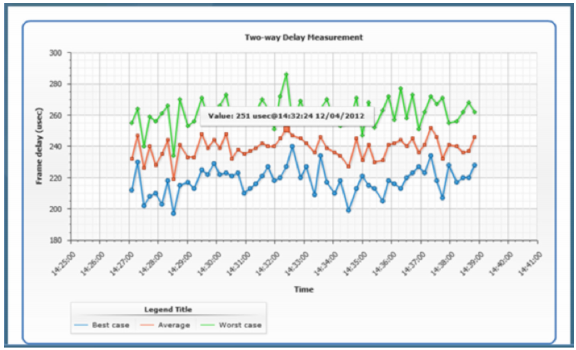
Juniper Networks Junos Space Connectivity Services Director
Junos Space Network Management
Our Price: Request a Quote
Our Price: Request a Quote
Our Price: Request a Quote
Click here to jump to more pricing!
Please Note: All prices displayed are Ex-VAT. 20% VAT is added during the checkout process.
Overview:
Service providers and enterprises must be able to rapidly provision and offer new MPLS and Carrier Ethernet services across their networks. In order to reduce operational costs and enable quick service rollouts, these network operators need an intelligent provisioning application that facilitates the design, deployment and management of services.
Junos Space Connectivity Services Director facilitates lifecycle management of connectivity services such as L2VPN and L3VPN services, QoS profile configuration, service performance validation and monitoring, and synchronization management. In addition to an intuitive graphical user interface, the application also supports a rich set of API functions to enable northbound integration and service orchestration with other OSS platforms.
Junos Space Network Management
Junos Space Connectivity Services Director is part of Junos Space, a comprehensive network management solution that simplifies management of Juniper's switching, routing, and security devices. Junos Space is a critical component of Juniper's SDN strategy as it provides a centralized management plane with a single point-of-access into the network and a common management platform for managing and creating applications to meet your specific needs. With Junos Space, you can simplify and automate the network, improve network agility, and deliver new services quickly, all from a single console. Junos Space is composed of the following software elements:
- Junos Space Network Management Platform: Provides comprehensive FCAPS and element management of Juniper devices which improves operator efficiencies, providing a programmable interface and exposable APIs that enable the development and integration of third-party applications.
- Junos Space Management Applications: Plug-and-play, domain-specific applications to help you provision new services and optimize workflow tasks across thousands of Juniper devices.
While the Junos Space Network Management Platform offers broad fault, configuration, and device provisioning capabilities with a task-specific user interface, Junos Space Management Applications extend the breadth of the platform to optimize network management for various domains. The Connectivity Services Director application runs on the Junos Space platform, where it enables users to automate the end-to-end provisioning of new services across thousands of devices with a simple point-and-click GUI, and to optimize management for specific domains such as core, edge, access and aggregation, data center, WAN, and campus and branch.
Junos Space Connectivity Services Director Product Description
Companies that offer MPLS and Carrier Ethernet services face common business challenges such as controlling capital and operating expenses, accelerating time to market and increasing customer satisfaction. At the same time, these companies also have to deal with technical challenges such as:
- Provisioning a customer service rapidly and accurately
- Scaling to keep up with customer demand
- Tracking site-specific quality of service (QoS)
- Troubleshooting and pinpointing problems in the network

Junos Space Connectivity Services Director Functions
Junos Space Connectivity Services Director allows service providers and enterprises to rapidly enable new service offerings. It facilitates an automated and streamlined approach to the service design and provisioning process and helps reduce fallout from misconfigured customer services, thereby increasing customer satisfaction and retention. Besides automating key provisioning tasks, Junos Space Connectivity Services Director also provides a complete network management solution, including automated service discovery, MPLS resource management, point-and-click service provisioning, validation, and troubleshooting for legacy ATM/TDM, MPLS and Carrier Ethernet environments.
The Junos Space Connectivity Services Director essentially manages the lifecycle of L2 and L3 services comprised of resource pool management, service design and provisioning, troubleshooting and performance monitoring, and service decommissioning. The highlevel capabilities of the product include:
- Automating the design, activation, and validation of the provisioning process for L2 and L3 VPNs across ATM/TDM, MPLS and Carrier Ethernet networks, enabling service providers to efficiently and cost-effectively manage deployments while reducing fallout from misconfigured services.
- Designing, provisioning and activation of RSVP-signaled label-switched paths (LSPs), as well as static LSPs, which can be configured as end-to-end, P2P, P2MP or full mesh.
- Monitoring faults and performance of VPN services using standards-based protocols and technologies such as Ethernet Connectivity Fault Management (CFM), Ethernet link-level fault detection and management, and Bidirectional Forward Detection (BFD).
- Provisioning synchronization interfaces such as IEEE1588- 2008(PTP) and Synchronous Ethernet (SyncE).
The Junos Space Network Management Platform and Junos Space Connectivity Services Director are all accessible through a northbound Representational State Transfer (REST)-based API. This enables network providers to tap into the rich functionality of Junos Space and build native applications on their Operations/ Business Support Systems (OSS/BSS) as they begin to embrace SDN architectures in their networks.
The Junos Space Network Management Platform infrastructure provides the basic capabilities for device management and system administration, such as:
- Device discovery
- Device image management
- Device inventory management
- Script management
- Log files management
- User and security administration
- Fault management
- Performance management
In addition to these basic functions, the Junos Space Network Management Platform facilitates a multi-tenant, plug-and-play application environment that enables fast start up and in-service device upgrades.
Features and Benefits:
| Features | Feature Description | Benefits |
|---|---|---|
| Reliable and scalable architecture |
|
|
| Auto-discovery (AD) and inventory of network devices |
|
|
| Automated MPLS and network resource management |
|
|
| Service design |
|
|
| Multihoming |
|
|
| Point-and-click provisioning |
|
|
| Configuration pre-validation |
|
|
| Configuration post-validation |
|
|
| Operational validation |
|
|
| Create, Read, Update, and Delete (CRUD) functionality |
|
|
| Synchronization management (option) |
|
|
| Performance monitoring |
|
|
| OSS/BSS integration (option) |
|
|
Junos Space Management Applications:
Rapid Device Discovery
The Junos Space Network Management Platform uses a variety of methods to discover network devices and bring them under management. Once the devices are under management, the Junos Space platform collects the entire physical inventory of these network elements and maintains a centralized repository of real-time information about each device, such as:
- List of line cards (FPC)
- Interface cards (PIC)
- Serial number for each chassis component
- Juniper Networks Junos OS version
- Operational, administrative state, speed/duplex of the interfaces
- Chassis type
Device Pre-Staging
Once devices have been discovered, pre-staging takes the devices already under Junos Space management and prepares them for service activation. Connectivity Services Director automatically detects the MPLS roles and the corresponding UNIs of discovered devices. The pre-staging process discovers network provider edge (N-PE) devices in the Junos Space database and assigns roles to those devices and their interfaces. This simplifies the service provisioning task, because only qualified devices are allowed to be selected for services.
Automated MPLS Resource Management
Deploying Carrier Ethernet services requires multiple network resources to be allocated and tracked per customer site. The most common network resources are VLAN ID, Virtual Circuit (VC) ID, route targets, and route distinguishers. In the case of VLAN IDs, these are usually allocated per customer-facing interface. When a service provider is potentially handling hundreds of customers, each being provisioned hundreds of services, tracking network resources can quickly become unmanageable and unscalable-particularly when the resources are tracked manually. For example, consider a scenario where a customer is experiencing loss of packets from one site to another. How quickly can a help desk operator troubleshoot the problem to help this customer?
Connectivity Services Director provides automated MPLS resource management. It auto allocates VLAN IDs to the UNIs, VC IDs and IPV4 addresses, and it tracks used resources. This not only minimizes user input during provisioning but also guarantees that the service provisioning pushed to the devices does not conflict with existing resources on the network.
Rapid Service Design
Predefined service definitions in Connectivity Services Director capture Juniper best practices for standard services in terms of the options selected, prefilled values for attributes such as bandwidth and more. Privileged users can create custom service definitions for non-standard network configurations.

Predefined Service Definitions
Juniper-recommended configurations for various service types include the following:
- P2P E-LINE service
- Full mesh and hub-and-spoke VPLS service
- Full mesh and hub-and-spoke L3VPN service
Automated Service Provisioning
Seventy-five percent of network outages are due to human error, such as misconfiguration when changing an existing customer configuration. Imagine that you have to activate a 20-site virtual private LAN service (VPLS) for a customer. How do you get started? Start a spreadsheet and keep track of the endpoints, PE routers, interfaces, VLANs per interfaces, route targets, route distinguishers, and other MPLS resources? You start by configuring the first site with great attention to detail, update your spreadsheet or piece of paper, and slowly make your way to the twentieth site by the end of the week. Now, how do you know that the VPLS for the twentieth site is working? You need to go site by site and verify that you have reachability to all remote sites, issuing 20x19 pings.
What happens when you lose the spreadsheet that contains all of the information for this customer VPN? What do you do if you need to add a twenty-first site to this VPN and verify that this new site is working with the 20 preceding sites?
Connectivity Services Director provides a simple GUI-based provisioning tool that allows the operator to easily select the endpoints for activating a customer's multisite VPN. It also provides pre-validation before applying a VPN configuration to target devices, verifying that there are no collisions with existing configurations on the target devices and ensuring that set of network parameters ultimately works and renders the VPN connection functional.
Connectivity Services Director also facilitates bulk provisioning of pseudowires for mobile backhaul deployments. This capability greatly simplifies provisioning of thousands of cell sites simultaneously with a configuration that is somewhat similar. Connectivity Services Director helps to design, provision, and activate RSVP signaled label-switched paths (LSPs), as well as static LSPs. These LSPs can be configured as P2P, P2MP or full mesh LSPs.
Automated MPLS Service Validation and Troubleshooting
Generating an accurate configuration and applying that configuration is the first step. But ensuring that the service is operational is an additional step that Connectivity Services Director provides. Verifying that the control plane and data plane are functional guarantees the VPN service is actually up and running.
The real value of Junos Space Connectivity Services Director comes when the number of VPN sites is large. The application detects all of the sites in a VPN and is able to verify that the label-switched paths (LSPs) are operational on all sites-issuing a full-mesh MPLS Operation, Administration, and Maintenance (OAM) verification to validate that the data plane is operational.
If one or more sites are not reachable, the operator is immediately alerted to the broken sites with a detailed analysis of the failure conditions.
Connectivity Services Director-with its built-in auto-discovery (AD), resource management capabilities and service design- allows service providers to quickly start offering Carrier Ethernet services in a very cost-effective manner.
Connectivity Services Director provides the following benefits:
- Removal of all possible manual configuration errors
- One centralized location for all L2VPN and L3VPN services
- Reduced mean time to recovery (MTTR) when troubleshooting customer connectivity issues
Synchronization Management
Junos Space Connectivity Services Director includes an optional component that manages synchronization devices such as Juniper's TCA Series Timing Appliances as well as synchronization subsystems within other Juniper devices that support the IEEE 1588-2008 standard-commonly known as Precision Time Protocol, or PTP. In addition to managing device level synchronization attributes, Connectivity Services Director also manages logical timing entities or domains that comprise groups of devices or subsystems. Users can create timing domains, assign various synchronization devices and subsystems to a domain and then apply a specific timing service template to each domain. Connectivity Services Director scans through the devices in the timing domain and performs configuration operations one-by-one based on the service template, thus automating and greatly simplifying the configuration process. Connectivity Services Director provides configuration management, health monitoring and discovery of synchronization devices.
Service Validation and SLA Monitoring
After a service has been provisioned, the service provider must be able to monitor the service in order to guarantee SLAs. Monitoring involves checking end-to-end path connectivity of the control plane and data plane. Control plane validation involves verifying that the MPLS edge routers have indeed established logical connections. For E-LINE LDP and BGP, LSPs have to be peered, and pseudowires from both PE routers have to be operationally in “up” status. For VPLS multipoint-to-multipoint, each site/leg has to have all the configured LSPs operationally “up.”

SLA Iterator profile
Data plane validation is one last step that leverages exiting MPLS OAM pings to ensure that the data plane is indeed working. The Connectivity Services Director application provides the following monitoring capabilities:
- Connectivity Fault Management (CFM) configuration at the port and interface level
- Service level CFM for P2P (E-Line) and VPLS (E-LAN) services
- Support for Y.1731 based one-way and two-way measurements for frame delay, frame delay variation, frame loss and service availability
Connectivity Services Director enables users to set up CFM flows between service endpoints in order to monitor the endto-end service using Y.1731 frames. Users can choose to gather performance data on demand, or create SLA Iterators and assign them to a service in order to periodically measure the data. In addition to these iterators, users can also associate an Action Profile with a service to describe actions that must be performed when connectivity problems are detected with the service.

Performance data collected through OAM flows
Supported Platforms:
Supported Platforms and the Software Versions for Connectivity Services Director
| Supported Platforms | Qualified Junos OS Release |
|---|---|
ACX Series Universal Access Routers:
|
Release 12.3R1 through Release 12.3X54-D10 for ACX1000, ACX1100, ACX2000, ACX2100, ACX2200, and ACX4000 routers Release 15.1X54-D20 for ACX5000 routers Release 12.3X54-D20 for ACX500 routers |
| MX Series 3D Universal Edge Routers | Release 12.2R1 through Release 15.1R1 for MX80, MX104, MX240, MX480, and MX960 routers Release 13.3R1 through Release 15.1R1 for MX2010 and MX2020 routers |
| M Series Multiservice Edge Routers | Release 10.0 through Release 12.2R1.8 for M320 router Release 10.0 through Release 14.2R1.12 for M7i and M10i routers |
| PTX Series Packet Transport Router | Release 13.2R2.2 for PTX3000 router Release 13.2R1.7 for PTX5000 router |
Documentation:
Download the Juniper Networks Junos Space Connectivity Services Director Data Sheet (PDF).
Pricing Notes:
- All prices displayed are Ex-VAT. 20% VAT is added during the checkout process.
- Pricing and product availability subject to change without notice.
Our Price: Request a Quote
Our Price: Request a Quote
Our Price: Request a Quote
Our Price: Request a Quote
Our Price: Request a Quote
Our Price: Request a Quote
Our Price: Request a Quote
